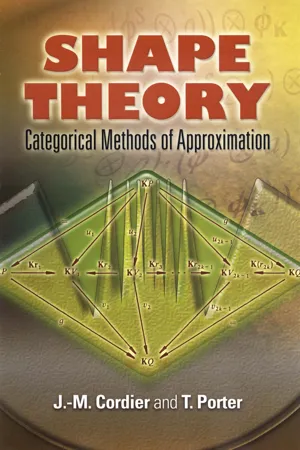
- 208 pages
- English
- ePUB (mobile friendly)
- Available on iOS & Android
About This Book
This in-depth treatment uses shape theory as a "case study" to illustrate situations common to many areas of mathematics, including the use of archetypal models as a basis for systems of approximations. It offers students a unified and consolidated presentation of extensive research from category theory, shape theory, and the study of topological algebras.
A short introduction to geometric shape explains specifics of the construction of the shape category and relates it to an abstract definition of shape theory. Upon returning to the geometric base, the text considers simplical complexes and numerable covers, in addition to Morita's form of shape theory. Subsequent chapters explore Bénabou's theory of distributors, the theory of exact squares, Kan extensions, the notion of a stable object, and stability in an Abelian context. The text concludes with a brief description of derived functors of the limit functor theory—the concept that leads to movability and strong movability of systems—and illustrations of the equivalence of strong movability and stability in many contexts.
Frequently asked questions
Information
1
Borsuk’s Shape Theory for Compact Metric Spaces
Table of contents
- Cover
- Title Page
- Copyright Page
- Table of Contents
- Introduction
- Advice to the reader
- 1. Borsuk’s shape theory for compact metric spaces
- 2. Categorical shape theory
- 3. Shape theory for topological spaces
- 4. Distributors and shape theory
- 5. Functors between shape theories
- 6. Stability and movability
- Appendix: Categorical shape theory and Pattern Recognition, a possible link
- References
- Index